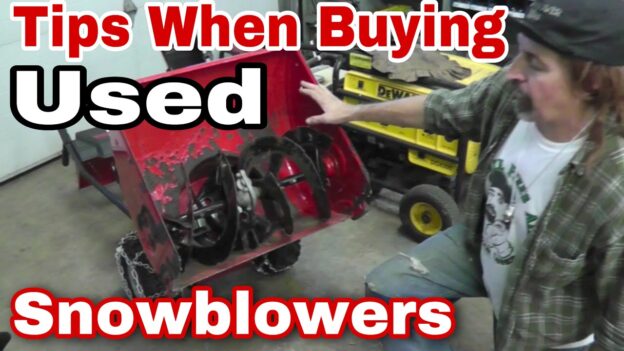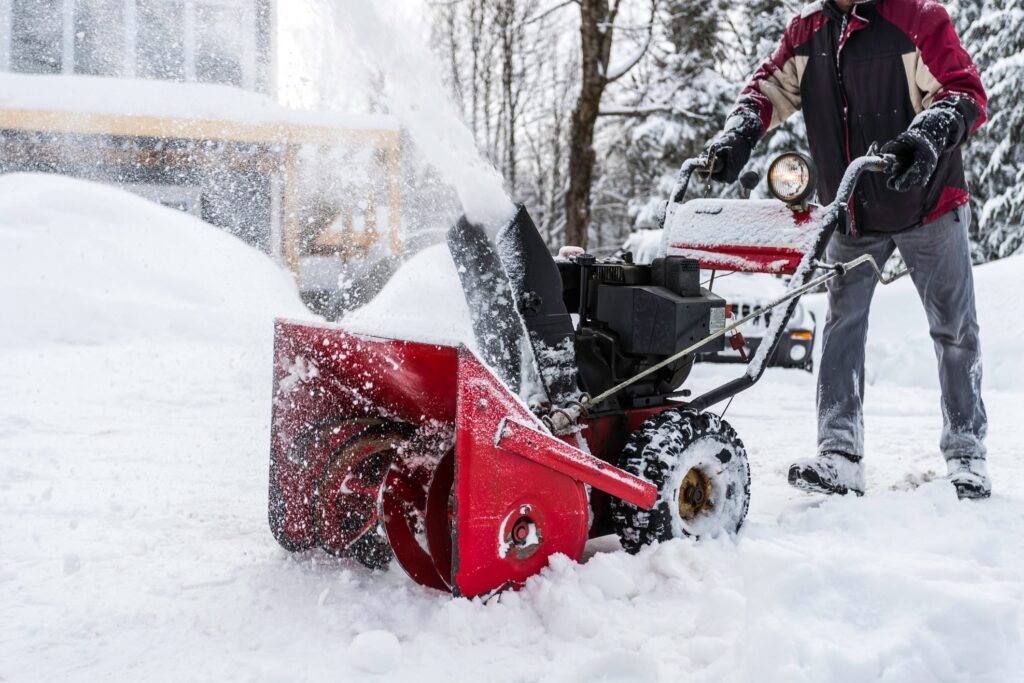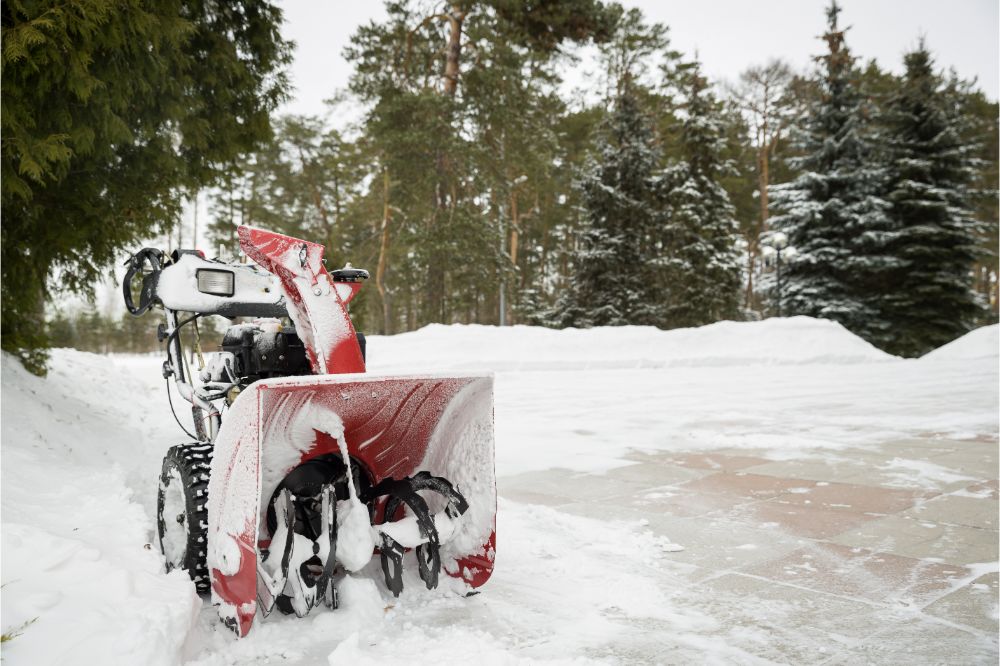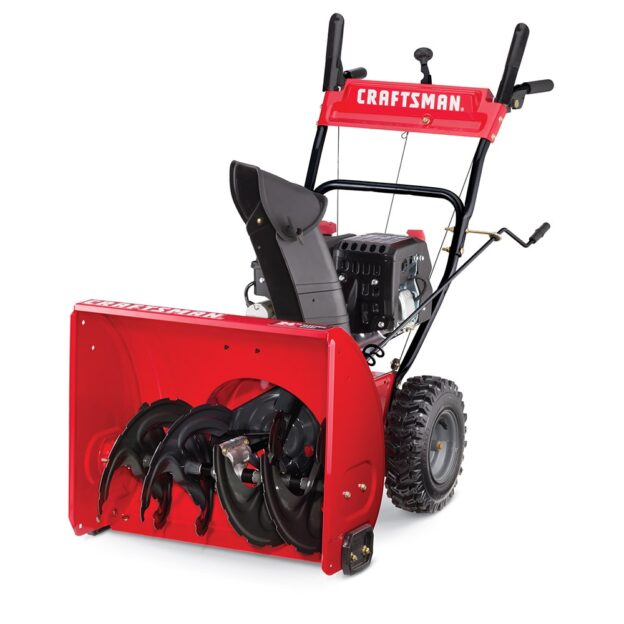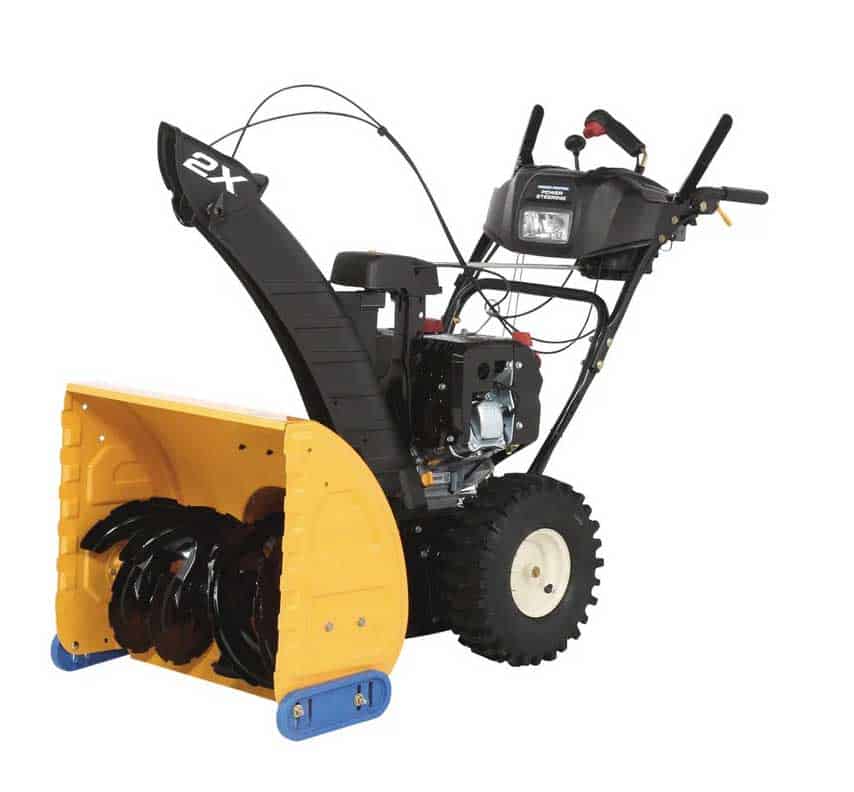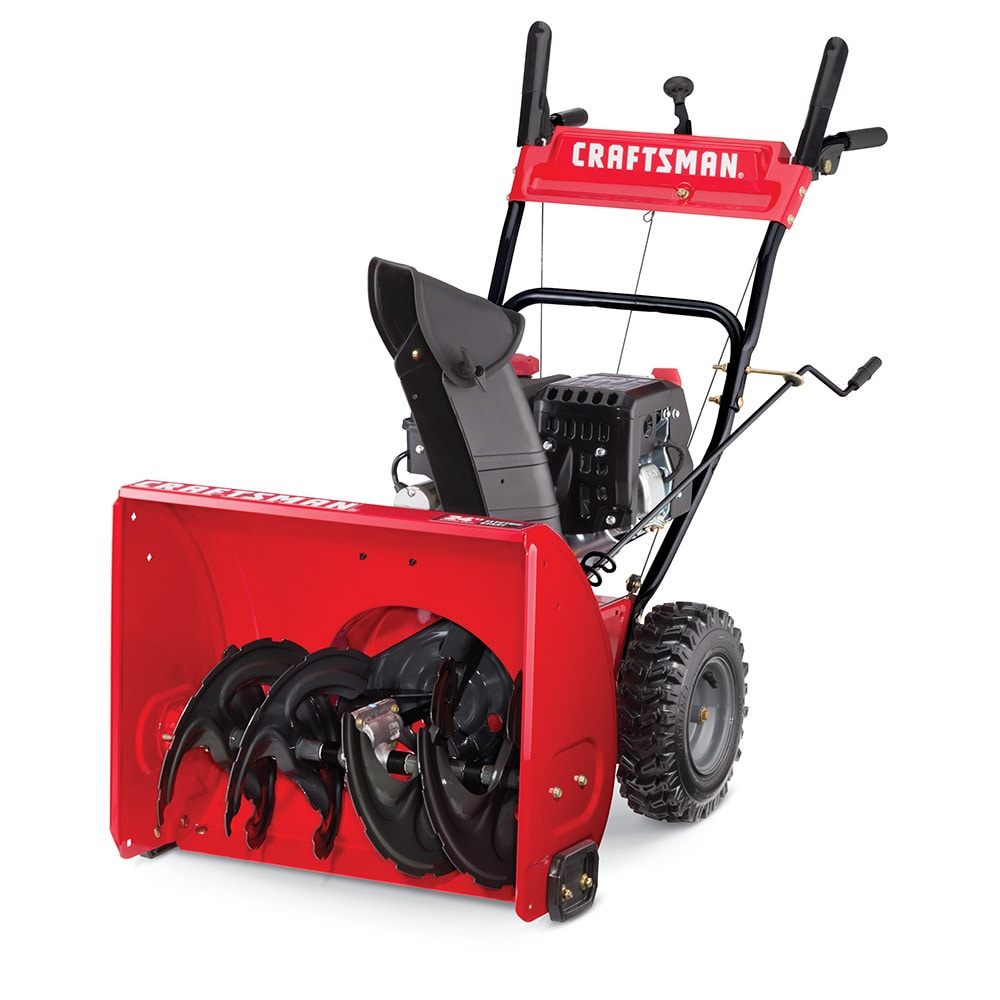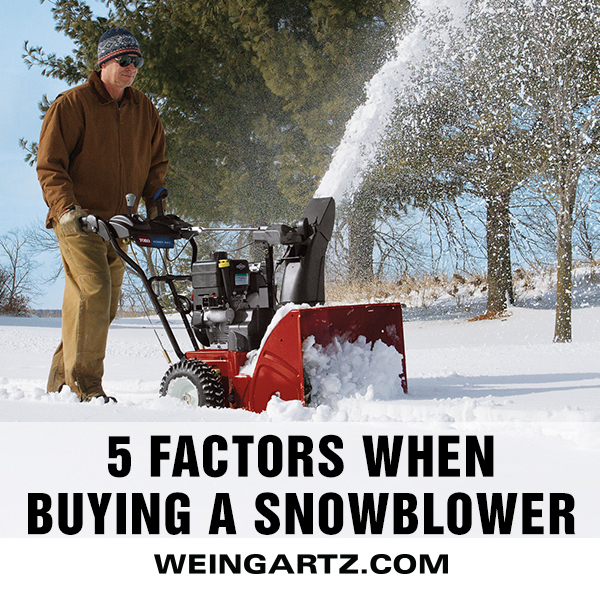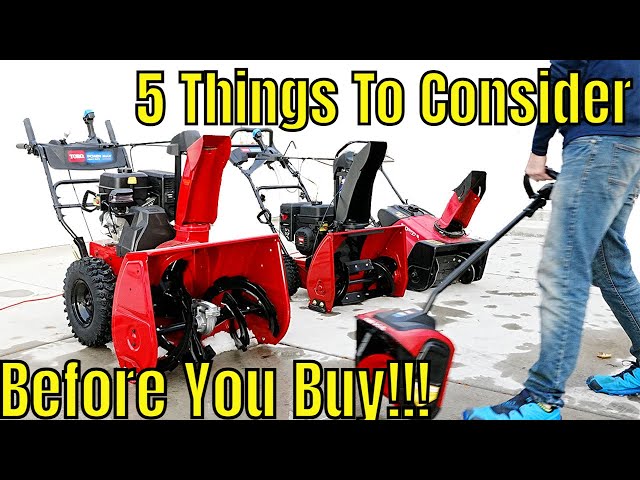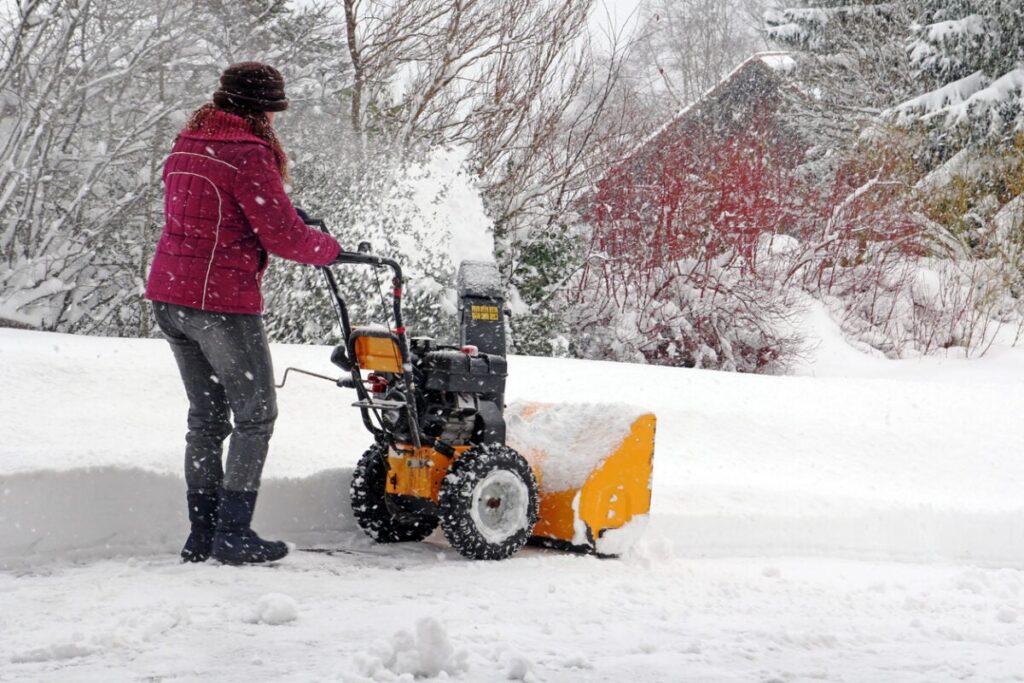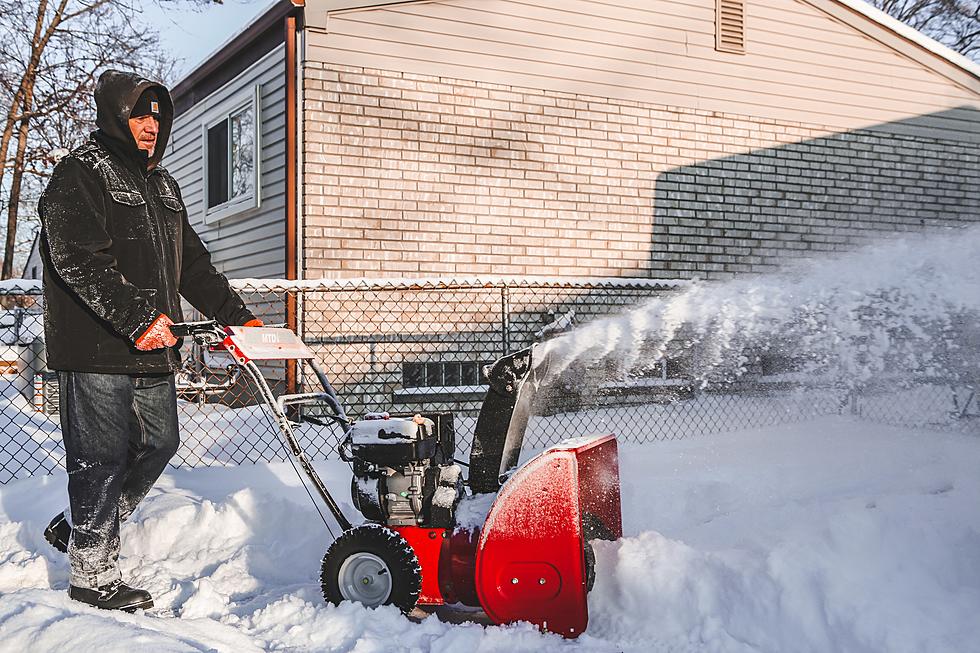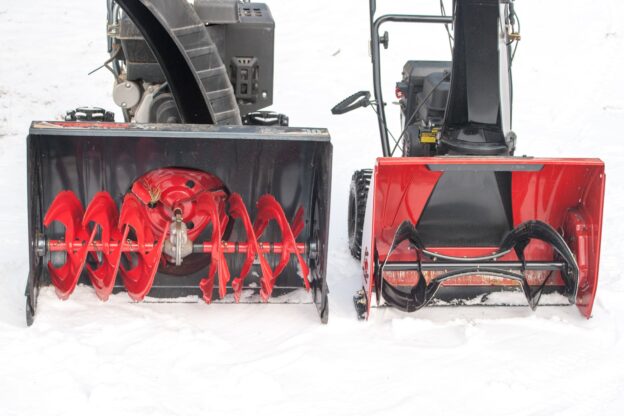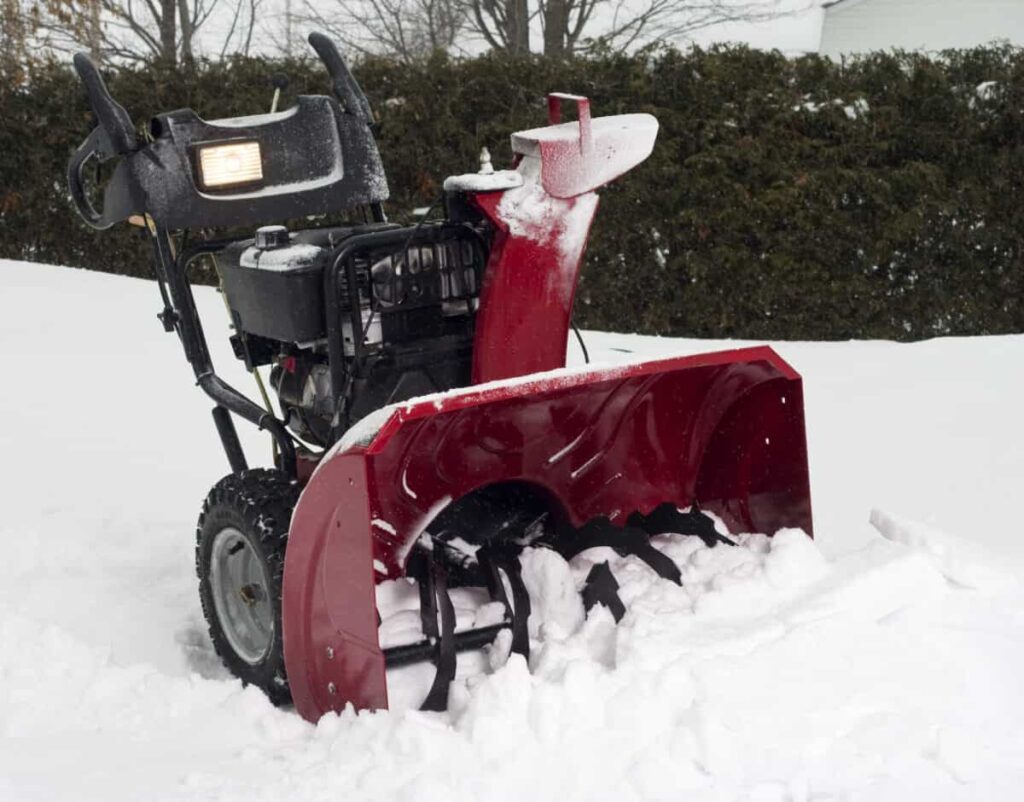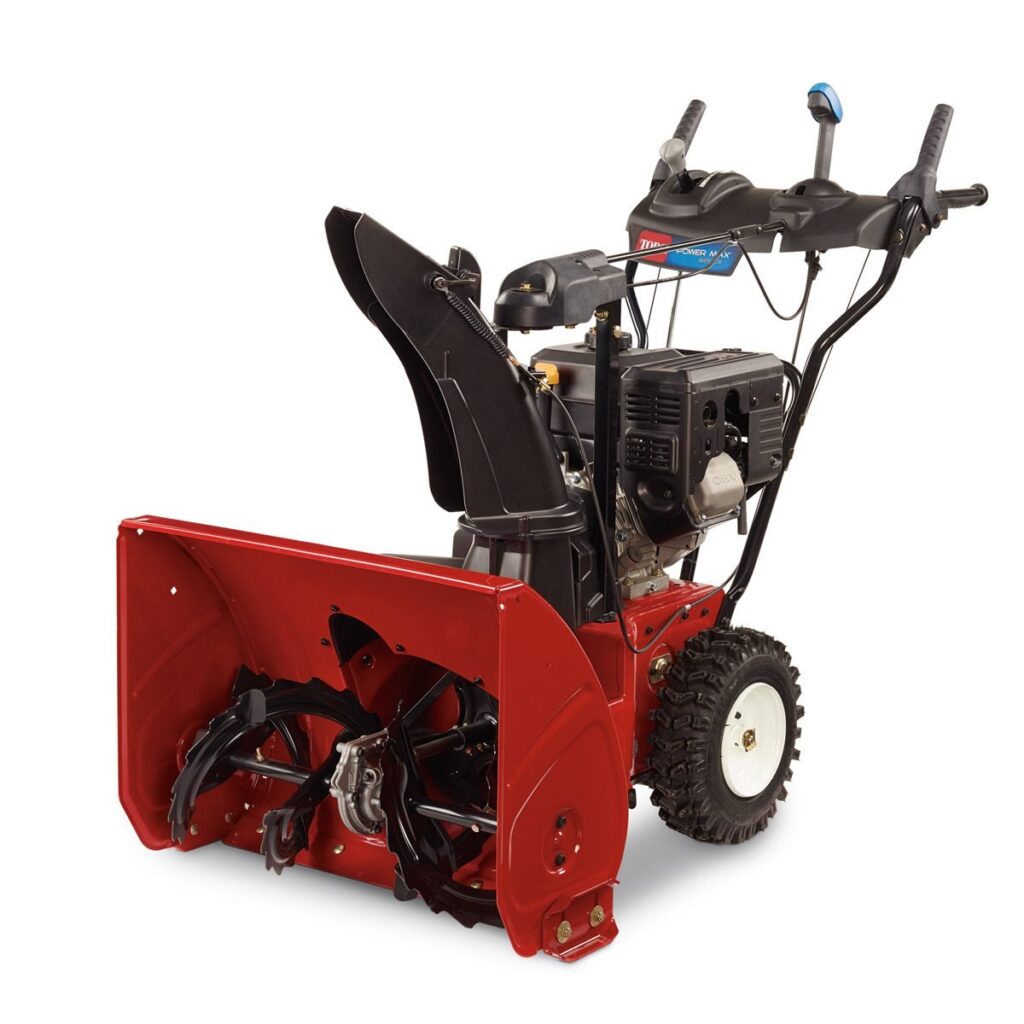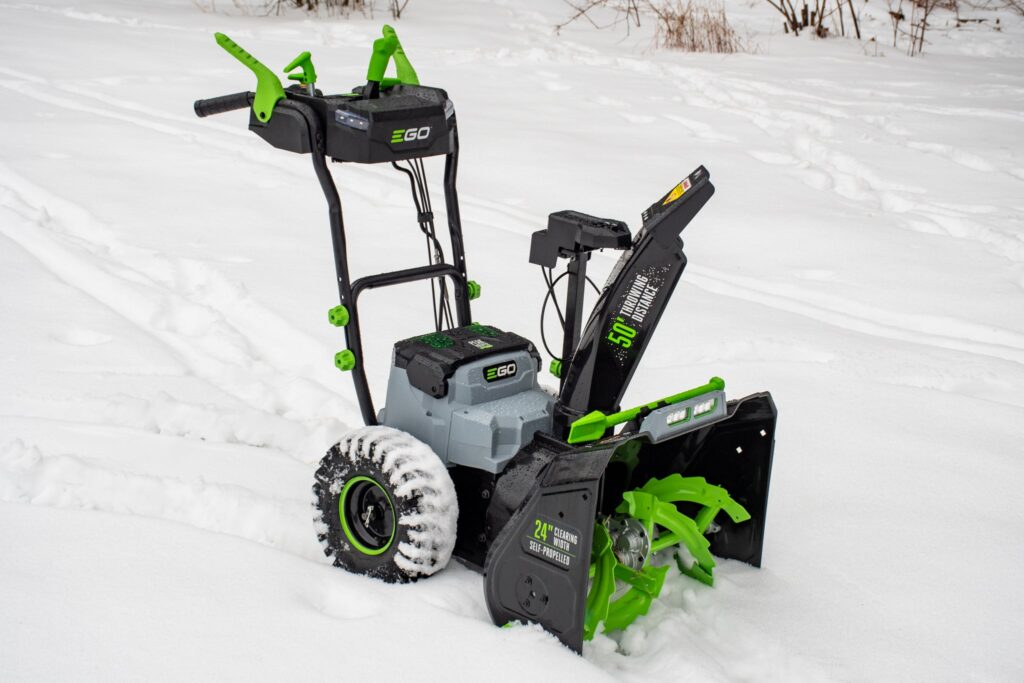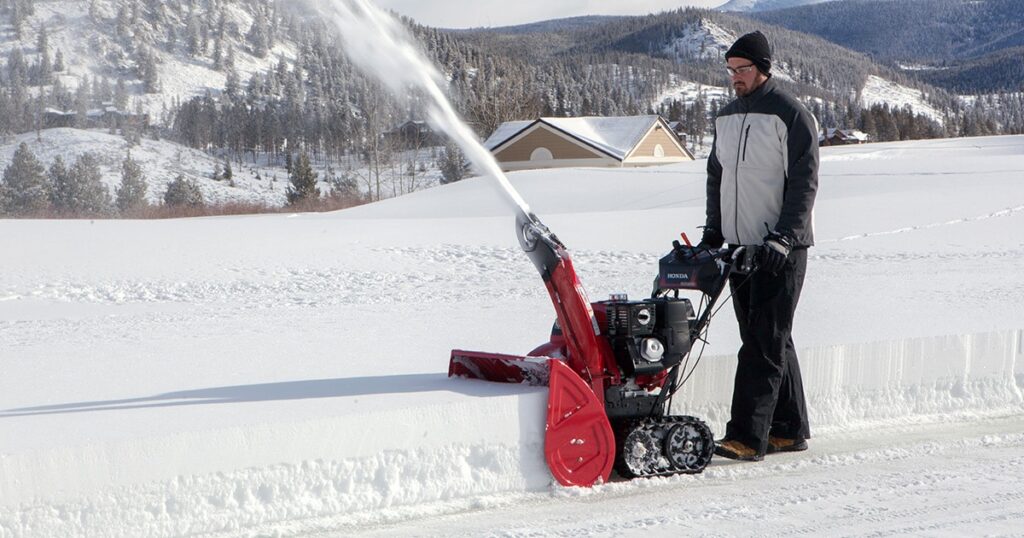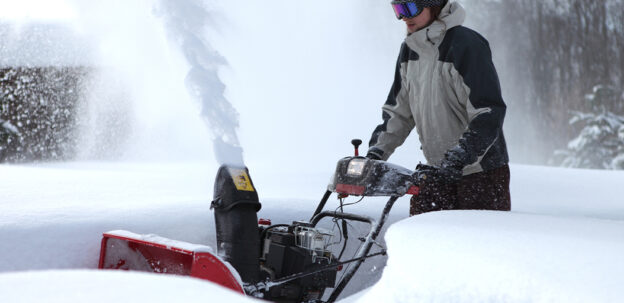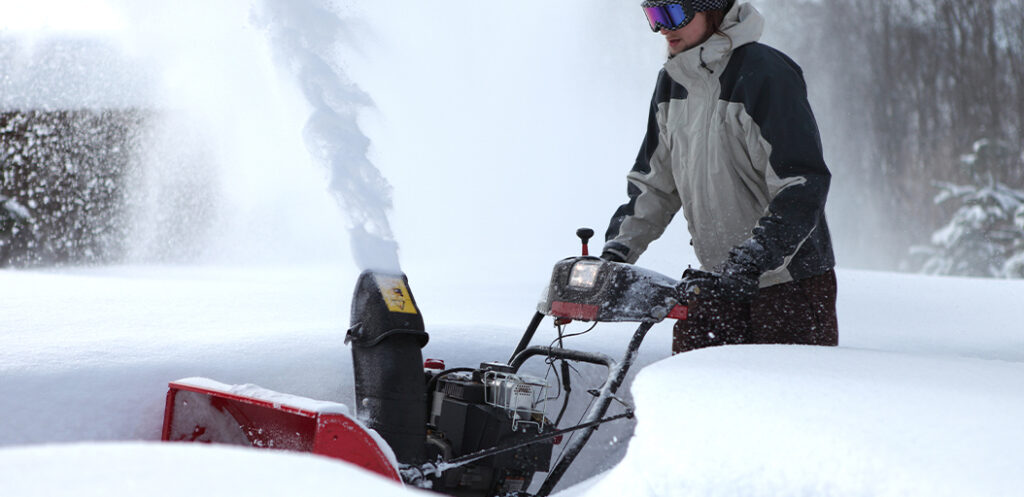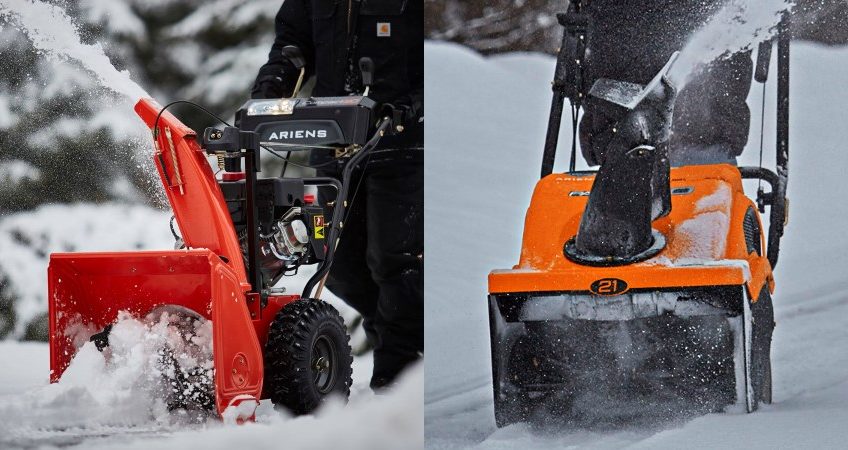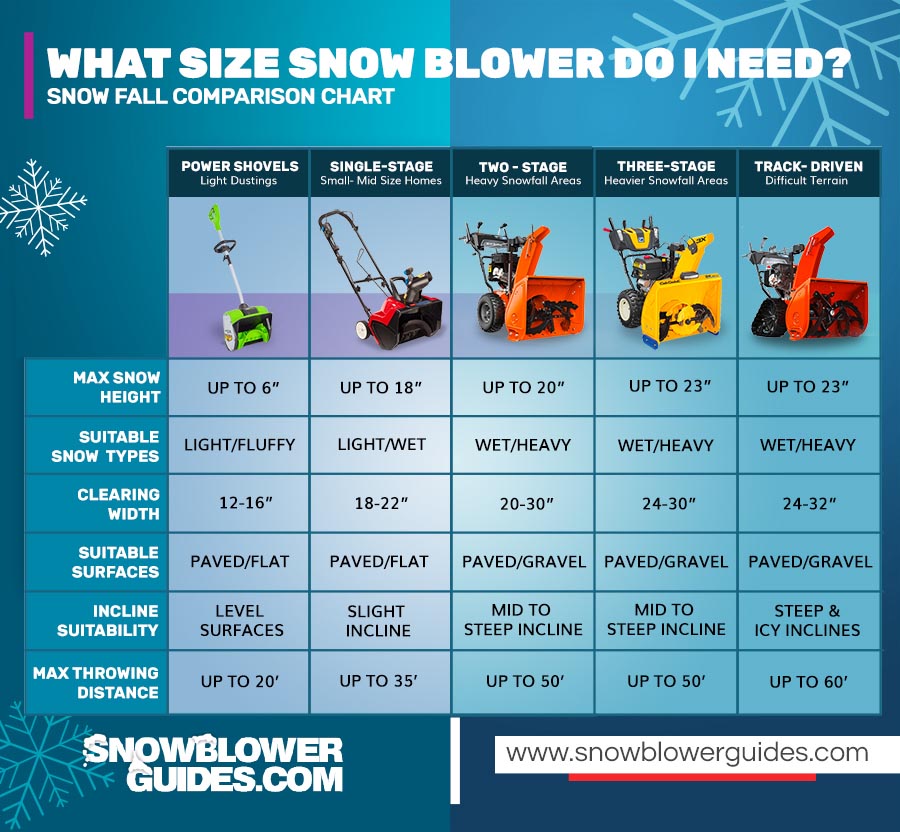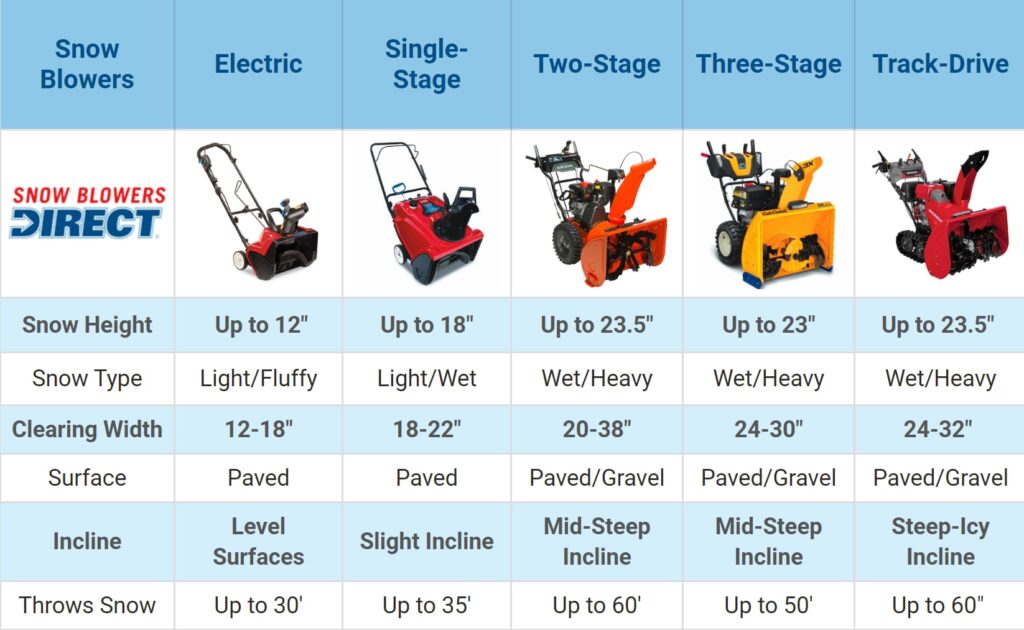So you find yourself facing yet another harsh winter season filled with snow-covered driveways and sidewalks. The thought of shoveling all that snow seems daunting, but is it worth investing in a brand new snow blower? Perhaps not. Before you go ahead and empty your wallet on a shiny new machine, consider the option of buying a used snow blower. In this article, we will explore whether purchasing a used snow blower is a smart decision, taking into account factors such as cost-effectiveness, reliability, and overall performance.
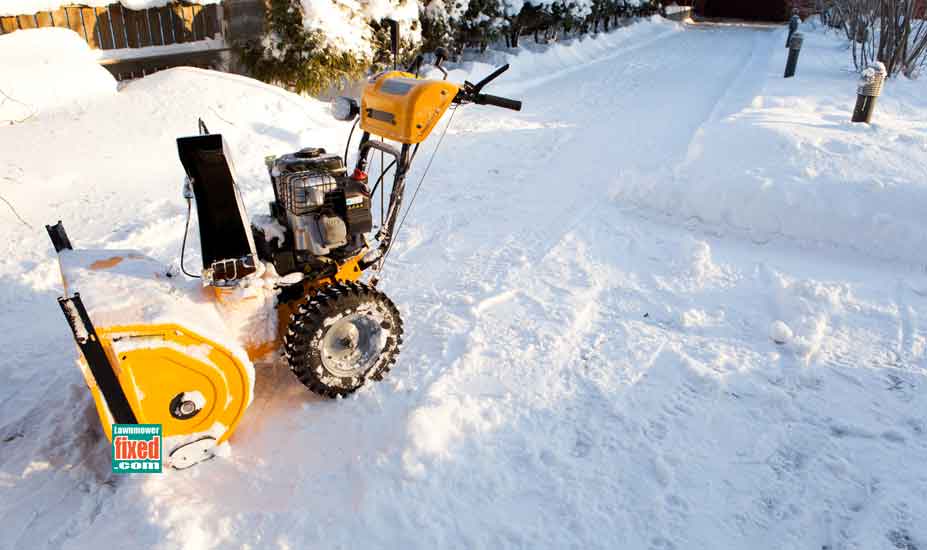
This image is property of www.lawnmowerfixed.com.
Factors to Consider
Initial Cost Savings
When considering whether to buy a used snow blower, one of the main factors to take into account is the initial cost savings. Used snow blowers typically come with a significantly lower price tag compared to brand new ones. This can be especially appealing if you are on a tight budget and looking to save some money.
Condition of the Snow Blower
The condition of the used snow blower is another crucial factor to consider. Before purchasing a pre-owned machine, it is essential to thoroughly inspect it to ensure it is in good working condition. Look for signs of wear and tear, such as rust, dents, or broken parts. It is also a good idea to ask the seller about any recent repairs or maintenance that has been performed on the snow blower.
Performance and Efficiency
The performance and efficiency of a used snow blower are important considerations. While older models may not have the same features and technologies as newer ones, they can still effectively clear snow if in good working condition. Pay attention to the machine’s power and size specifications, such as the engine power and clearing width, as this will affect its performance in different snow conditions.
Maintenance History
Knowing the maintenance history of a used snow blower is crucial for understanding its overall condition. Ask the seller for any maintenance records, including regular servicing, oil changes, and any repairs done. A snow blower that has been well-maintained will likely have a longer lifespan and better performance compared to one that has received little or no maintenance.
Availability of Warranty
Unlike purchasing a new snow blower with a manufacturer’s warranty, buying a used one may not come with the same level of warranty coverage. However, some sellers may offer limited warranties or guarantees. It is important to inquire about any existing warranty or the possibility of purchasing extended warranty coverage to protect your investment.
Expected Lifespan
Consider the expected lifespan of a used snow blower before making a decision. While newer models can last longer due to improved technology, a well-maintained older snow blower can still provide several seasons of reliable service. Research the average lifespan of different brands and models to help determine if a used snow blower can meet your long-term needs.
Advantages of Buying Used
Lower Price
The most significant advantage of buying a used snow blower is the lower price. By opting for a pre-owned machine, you can save a significant amount of money compared to buying a brand new one. This cost savings can be particularly attractive if you are on a tight budget or looking for a short-term solution.
Opportunity for High-Quality Brands
Purchasing a used snow blower gives you the chance to own a high-quality brand that may have been otherwise unaffordable. Many reputable manufacturers produce snow blowers built to last, and by buying used, you can potentially find a top-tier machine at a fraction of its original price.
Reduced Depreciation
While brand new snow blowers can depreciate in value quickly, especially during the first few years of ownership, used snow blowers typically experience reduced depreciation. By buying a pre-owned machine, you can potentially minimize the impact of depreciation on your investment.
Inspected and Serviced
When buying a used snow blower, many sellers will have gone through the machine and inspected or serviced any necessary parts. This can provide you with additional confidence in your purchase, knowing that the snow blower has been checked and is in good working condition.
Environmentally Friendly
Opting for a used snow blower instead of purchasing a new one can contribute to a more sustainable lifestyle. By extending the lifespan of existing machines, you help reduce the demand for new manufacturing and the associated environmental impact. Buying used is a great way to reduce waste and make a positive contribution to the environment.
Disadvantages of Buying Used
Less Warranty Coverage
One of the main disadvantages of buying a used snow blower is the typically reduced warranty coverage. While some sellers may offer limited warranties, it is important to note that the coverage may not be as comprehensive as when purchasing a new machine. This means you may have to bear the cost of any repairs or maintenance that arise after the purchase.
Potential for Hidden Issues
When buying a used snow blower, there is always the possibility of encountering hidden issues that may not be immediately apparent. Despite inspections and maintenance, certain problems may only arise after extended use. It is important to be prepared for potential unforeseen expenses that could arise as a result.
Limited Features and Technology
Used snow blowers may not have all the latest features and technologies that come with newer models. While they can still be effective at clearing snow, you may miss out on advancements such as electric start mechanisms, heated handles, or advanced control options. Consider whether these features are essential to your snow clearing needs.
Higher Maintenance Costs
As a snow blower ages, it may require more frequent or extensive maintenance. Depending on the age and condition of the used snow blower you purchase, you may need to factor in potentially higher maintenance costs. Consider whether the potential savings on the initial purchase price outweigh the potential increased maintenance expenses over the lifetime of the machine.
Factors Influencing Decision
Budget Constraints
Your budget constraints will play a significant role in determining whether buying a used snow blower is the right choice for you. If you have a limited budget or are looking to save money, purchasing a pre-owned machine may be a more affordable option compared to buying new.
Frequency and Amount of Snowfall
The frequency and amount of snowfall in your area will impact your decision on whether to buy a used snow blower. If you experience heavy snowfall regularly, investing in a new or higher-powered machine may be more suitable for efficiently clearing large amounts of snow. However, if snowfall is infrequent or light, a used snow blower may be adequate for your needs.
Size of the Area to Clear
The size of the area you need to clear of snow is an important factor to consider. Larger areas may require more powerful snow blowers with wider clearing widths to cover the ground efficiently. Assess the size of your driveway, walkways, or any other areas you need to clear and ensure the used snow blower you choose can handle the workload.
Personal Mechanical Skills
Your own mechanical skills and comfort level with maintaining and repairing equipment should also influence your decision. If you are confident in your abilities, you may be more inclined to buy a used snow blower and perform any necessary maintenance or repairs yourself. However, if you lack mechanical skills or prefer not to do it yourself, it may be wise to invest in a new machine with a warranty and professional support.
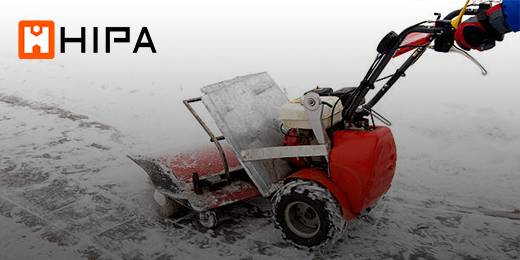
This image is property of cdn.shopifycdn.net.
Tips for Buying Used
Research and Comparison
Before making a purchase, conduct thorough research and compare different options available to you. Look for reviews and ratings of various models and brands to get an idea of their reliability and performance. Additionally, compare prices from different sellers to ensure you are getting the best deal possible.
Inspect the Snow Blower
When viewing a used snow blower, take the time to inspect it thoroughly. Check for signs of wear and tear, rust, or any damaged or missing components. Ensure that all the controls and features are in working order. If possible, ask the seller to demonstrate the snow blower’s functionality before finalizing the purchase.
Test and Review Performance
Inquire about the opportunity to test the snow blower’s performance before buying. This will allow you to assess its functionality firsthand and ensure it meets your snow clearing needs. Pay attention to factors like power, maneuverability, and ease of use during the testing phase.
Check Maintenance History
Ask the seller for any available maintenance records or information about past servicing. Understanding the maintenance history of the snow blower will give you an idea of how well it has been cared for and its potential lifespan. A machine with a consistent and well-documented maintenance history is more likely to provide reliable performance.
Verify Warranty Information
If the used snow blower comes with any remaining warranty, make sure to verify the details with the seller. Understand the terms and conditions of the warranty, including any limitations or exclusions. If applicable, consider purchasing extended warranty coverage to provide additional peace of mind.
Alternatives to Buying Used
Purchasing a New Snow Blower
If budget allows, purchasing a new snow blower may provide you with the latest features, technology, and warranty coverage. While the upfront cost may be higher, you can potentially benefit from long-term reliability and support from the manufacturer.
Renting a Snow Blower
For occasional or limited snow clearing needs, renting a snow blower can be a cost-effective solution. Rental options are available at many equipment rental stores and can save you from the long-term commitment of owning a snow blower.
Sharing with Neighbors
If you live in a close-knit community, consider collaborating with neighbors to purchase a snow blower together. Sharing the cost and responsibilities can be a great way to access a high-quality machine without a hefty individual investment.
Manual Snow Removal
For small areas or light snowfall, manual snow removal methods such as shoveling or using a snow pusher can be a simple and environmentally friendly alternative. While it requires physical effort, it is a cost-effective option with no additional equipment required.
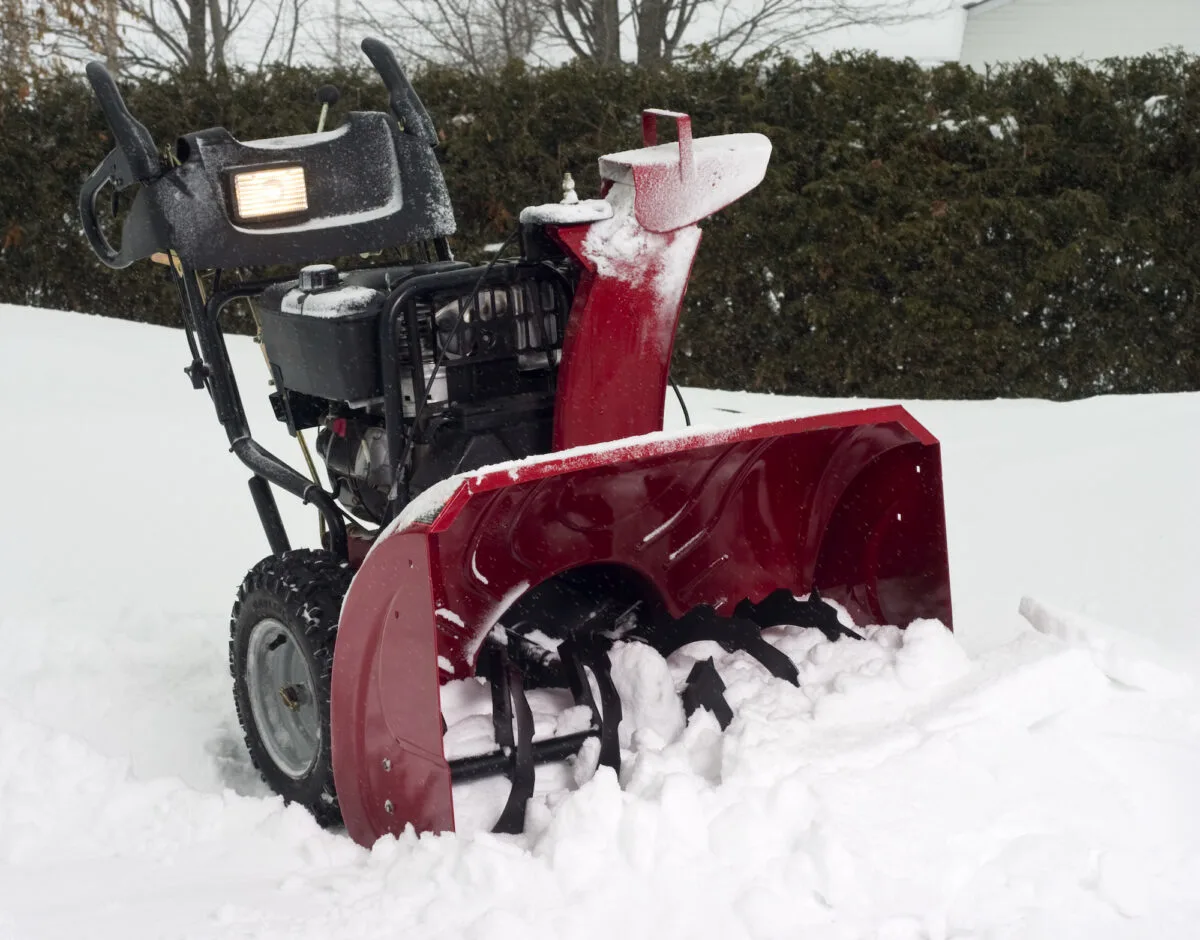
This image is property of singlegirlsdiy.com.
Where to Buy Used Snow Blowers
Online Marketplaces
Online marketplaces such as eBay, Craigslist, or Facebook Marketplace offer a wide range of options when it comes to buying used snow blowers. These platforms allow you to search for specific models, compare prices, and communicate directly with sellers before making a purchase.
Classified Ads and Local Listings
Check local classified ads in newspapers or community bulletin boards for used snow blowers being sold in your area. These listings often provide contact information, allowing you to directly reach out to the seller and arrange a viewing or negotiation.
Yard Sales and Garage Sales
Yard sales and garage sales can occasionally offer used snow blowers. Keep an eye out for local advertisements or signs in your neighborhood indicating such sales. However, availability may be limited, and it may require diligent search efforts and a bit of luck to find a suitable option.
Thrift Stores and Resale Shops
Some thrift stores or resale shops occasionally carry small engines, including snow blowers. While the selection may not be extensive, visiting these stores can result in unexpected finds. Check with local thrift stores or inquire if any resale shops specialize in outdoor equipment.
Considerations for Online Purchases
Seller Reputation and Ratings
When buying a used snow blower online, consider the reputation and ratings of the seller. Look for sellers with positive feedback and high ratings to ensure a smooth and trustworthy transaction. Read reviews from previous buyers to gauge their satisfaction with the seller’s products and service.
Detailed Product Descriptions
Carefully read and review the product descriptions provided by the seller. Look for details on the snow blower’s specifications, condition, and any accessories or parts included. Pay attention to any discrepancies or vague information and reach out to the seller for clarification if necessary.
Photos and Videos
Examine the photos and videos provided by the seller to gain a visual understanding of the snow blower’s condition and features. Look for clear and detailed images that showcase the machine from various angles. If available, watch any videos that demonstrate the snow blower’s performance.
Payment and Shipping Options
Before making an online purchase, ensure that you are comfortable with the available payment and shipping options. Consider using secure payment platforms to protect your financial information. Review shipping costs and delivery times to confirm they align with your expectations.
Return and Refund Policies
Check the seller’s return and refund policies to ensure you have options in case the snow blower does not meet your expectations or arrives in a condition different from what was described. Familiarize yourself with any deadlines or requirements for initiating returns or seeking refunds.
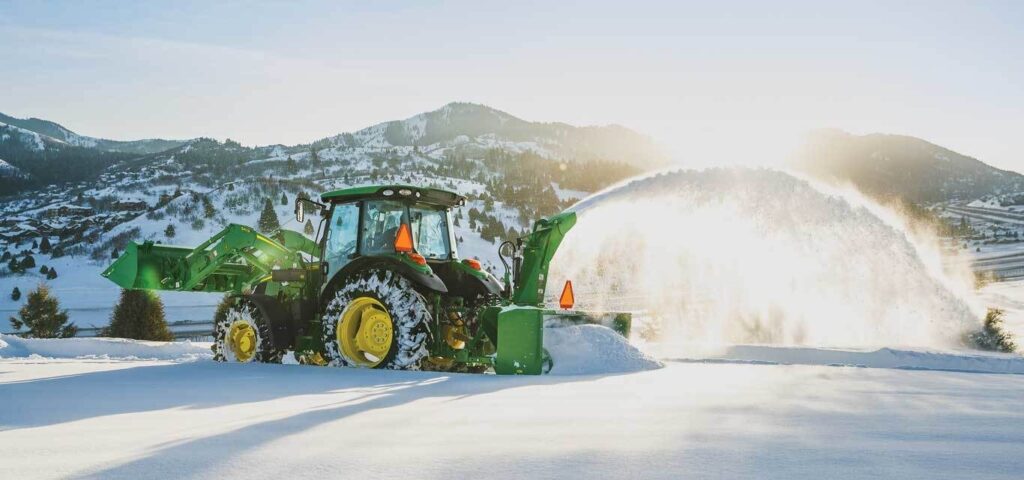
This image is property of blog.machinefinder.com.
Important Features to Look For
Engine Power and Size
Consider the engine power and size of the snow blower, as these factors will directly affect its performance. Higher engine power will allow the machine to handle heavier or deeper snow, while a larger size can contribute to more efficient snow clearing.
Clearing Width and Intake Height
The clearing width and intake height determine the snow blower’s capacity to handle different snow depths and areas. A wider clearing width allows for faster snow clearing, while a higher intake height accommodates deeper snowfall.
Snow Discharge Distance
Evaluate the snow blower’s snow discharge distance to ensure it can effectively move snow away from the cleared area. Longer snow discharge distances can be advantageous, especially if you need to clear snow a significant distance from your driveway or walkways.
Adjustable Chute and Deflector
Look for a snow blower with an adjustable chute and deflector. This feature allows you to control the direction and height at which the snow is discharged, providing greater flexibility when clearing snow in different areas or around obstacles.
Ease of Maneuverability
Consider the snow blower’s maneuverability, particularly if you have tight spaces or obstacles to navigate. Look for features such as easy steering, large wheels, or a self-propelling mechanism, which can contribute to smoother operation and less physical strain.
Electric Start and Recoil Start
Electric start and recoil start mechanisms are important features to evaluate. Electric start allows for convenient, hassle-free starting, while a recoil start serves as a backup option in case of power failure or other issues.
Heated Handles and Headlights
Though not essential, heated handles can provide added comfort during cold winter conditions. Similarly, built-in headlights can be beneficial when clearing snow during darker hours or in low-light environments.
The Final Verdict
Evaluate Personal Needs and Situation
Before deciding whether to purchase a used snow blower, carefully evaluate your personal needs and situation. Consider factors such as your budget, snowfall frequency, area size, and mechanical skills. By assessing your specific circumstances, you can make a more informed decision.
Weigh Pros and Cons
Weigh the advantages and disadvantages of buying a used snow blower, taking into account factors such as lower price, reduced warranty coverage, potential hidden issues, and limited features. Conduct a cost-benefit analysis to determine if the pros outweigh the cons for your individual needs.
Consider Long-Term Investment
Consider the long-term investment aspect when deciding between a used snow blower and a new one. Evaluate the potential lifespan, maintenance costs, and reliability of the machine. Balance your budget constraints against the desire for long-term value and durability.
Seek Professional Advice
If you feel unsure or overwhelmed by the decision-making process, seek professional advice. Consult with a reputable snow blower dealer or knowledgeable individuals who can provide guidance based on their expertise. Their insights can help you make a more confident and well-informed purchase decision.
In conclusion, buying a used snow blower can offer several advantages, including lower price, access to high-quality brands, reduced depreciation, and environmental benefits. However, it also comes with potential downsides, such as limited warranty coverage and higher maintenance costs. Assessing factors like initial cost savings, snow blower condition, performance, maintenance history, and warranty availability is essential in making a well-informed decision. Consider your budget constraints, snowfall frequency, area size, and personal mechanical skills to determine which option best suits your needs. Whether you choose to buy used, explore alternative options, or decide on a new snow blower, thorough research, inspection, and consideration of important features will ensure that you find the best snow-clearing solution for your specific situation.

This image is property of i.ytimg.com.
